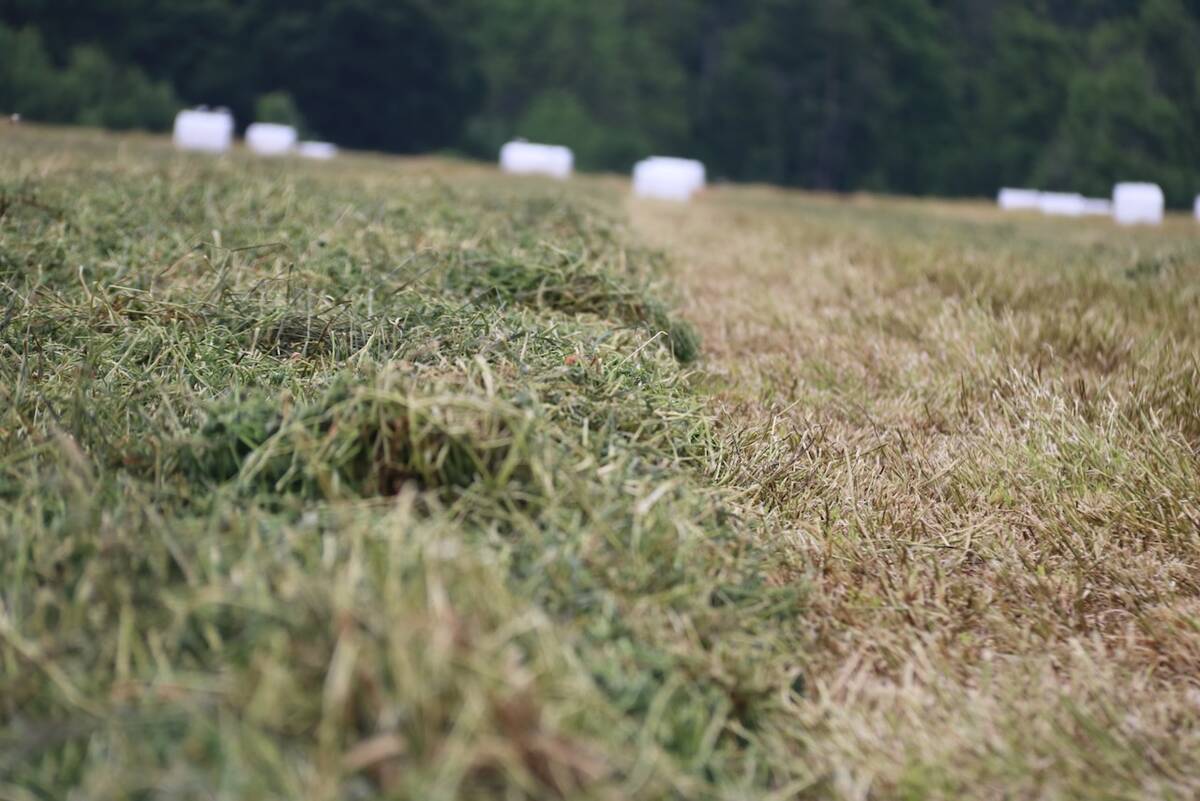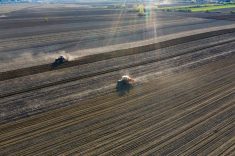It’s not the best fit for every situation, but variable rate herbicide application could lower your chemical bills
Ty Faechner, executive director of the Agricultural Research and Extension Council of Alberta (ARECA), says variable rate herbicide application can offer several benefits.
Faechner has studied variable rate herbicide application, and ARECA runs projects looking at on-farm precision agriculture research.
Variable rate herbicide is ideal when weeds are patchy, rather than evenly distributed throughout a field, Faechner explains. Farmers or custom operators can apply herbicide where it’s needed, and reduce or eliminate application where weeds are thin or non-existent.
Successful variable rate application hinges on effective scouting, according to Faechner.
Read Also

New high-performance forage training program to launch in 2026
A new Canadian Forage and Grasslands Asssociation high-performance forage program will be a resource for farmers, agronomists and others in the forage sector.
“You rely on that information as the basis of which you’re going to apply your products. In my mind that has to be done well so that you can identify where things are happening in the field… After that you’ve got the technology, and you’ve got people who are fairly competent in terms of the actual application, and so usually that stuff works fairly well,” says Faechner.
There are environmental and agronomic benefits to variable rate technology. Because herbicides are only applied where they’re needed, farmers tend to use less. More targeted herbicide application may help lower the risk of herbicide resistance.
And of course, using less herbicide leaves more money in farmers’ pockets. “You’re able to get more bang for your buck in the sense that you don’t need to maybe apply as high a dose and then you get just as effective a response in terms of weed control,” says Faechner.
Variable rate challenges
Variable rate application does come with challenges. Along with proper scouting (which may include aerial or satellite images and walking the field), adjusting application rates can be tricky.
Faechner explains that different weeds respond differently to herbicides, depending on the conditions. Chemical companies generally set label rates high enough to guarantee the product will work under all conditions. With good growing conditions, certain weeds may be susceptible to lower rates. But sometimes herbicides may not control weeds as expected at lower rates.
While some farmers have the knowledge and interest to scout, formulate application rates, and create field maps to control the application rates, many hire agronomists. “I think certainly it’s become more sophisticated, but people recognize it’s fairly specialized and you need to engage people that have those skills and knowledge. Actually, I think that’s a really positive development for the industry as well,” says Faechner.
Not for every situation
There are situations where variable rate application isn’t the best fit. Lush growth can add up to not only more weeds, but more uniform weed growth across the field, negating many of the benefits of variable rate application.
Farmers who have just purchased or rented new land may not have a strong historical knowledge of the land. “So then I think people are more inclined to basically do a uniform rate across the field, and that’s only because they want to mitigate some of their risk,” Faechner says.
Faechner has several suggestions for farmers who want to compare results of conventional spraying to variable rate applications. He recommends running test strips alternating between uniform and variable rate application — within the same field, if possible. Half the strips should be variable rate applications, and the other half uniform application. Farmers should flag the strips, or mark them with GPS. After spraying, farmers can compare the weed numbers and the herbicide’s effect on remaining weeds in the alternating strips.
For simpler, direct comparisons of results, keep on-farm research simple by only testing one new technology or product at a time in each field. “Otherwise you can’t figure it out because if you’ve done a number of things there, who knows if it’s a consequence of some other sprays that were put on perhaps, or different timings of when you went out there,” Faechner says.
Faechner says there seems to be a strong interest in not only public research, but also on-farm research. Farmers want information relevant to their local conditions, he explains.
“And quite honestly, I think that’s really empowering. If people can do some of that work themselves, and understandably there’s a cost for that, but what that does is it allows them to make important decisions with their own information that they’ve been able to generate. I think that’s where the industry’s headed.”
Farmers can download a free manual on variable rate herbicide and other precision ag technologies by registering with ARECA at www.areca.ab.ca/projects/manuals.html. †















